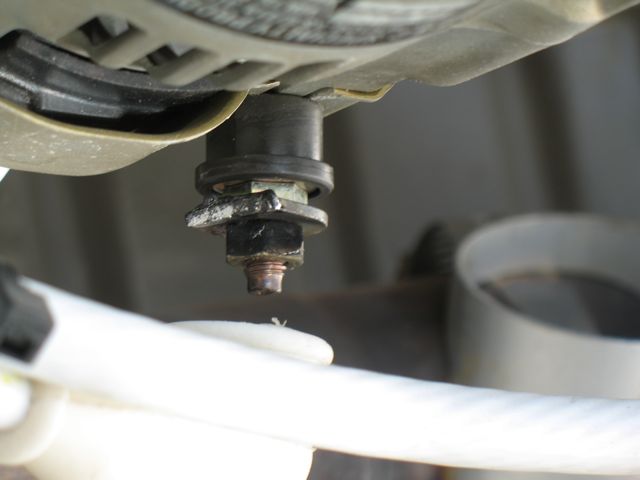mike
Member
Just a note for those in the final stages...
Sunday I went out to go fly the -9A. I taxied out to 35 and everything was beautiful. Clear skies everywhere. I was going to run up to Sherman for some gas.
But just as I pulled back power after my run up I noticed my amps go negative and my voltage go to 11.7v. Oh no, either I just lost a belt or the alternator just went out. Well, I'm not going to fly with something like that going on, so I taxied back to the hangar. When I pulled the cowl I the belt was intact and there was no sign of damage to the alternator. So I pulled the bottom cowl as well.
I started wiggling things to find out if there were any loose connections. When I grabbed the connector that goes to the alternator , something felt funny inside the rubber boot. So I pulled off the boot and... the ring terminal had broken off inside of the boot.

So no flying until I can place an order to B&C for a new ring terminal for 6awg wire.
Now I'm considering adding an additional brace for the rather thick alternator wire.
Regards,
Mike Schipper
Sunday I went out to go fly the -9A. I taxied out to 35 and everything was beautiful. Clear skies everywhere. I was going to run up to Sherman for some gas.
But just as I pulled back power after my run up I noticed my amps go negative and my voltage go to 11.7v. Oh no, either I just lost a belt or the alternator just went out. Well, I'm not going to fly with something like that going on, so I taxied back to the hangar. When I pulled the cowl I the belt was intact and there was no sign of damage to the alternator. So I pulled the bottom cowl as well.
I started wiggling things to find out if there were any loose connections. When I grabbed the connector that goes to the alternator , something felt funny inside the rubber boot. So I pulled off the boot and... the ring terminal had broken off inside of the boot.

So no flying until I can place an order to B&C for a new ring terminal for 6awg wire.
Now I'm considering adding an additional brace for the rather thick alternator wire.
Regards,
Mike Schipper









